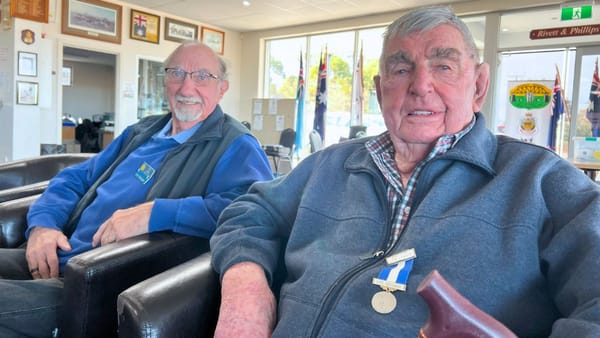Three local candidates run for election to First Nations Voice
A trio of Indigenous community leaders from Murray Bridge are among the candidates who will seek election to South Australia’s Voice to Parliament this weekend.

Stories create community – that’s why this story about an upcoming election is free to read. Help Murray Bridge News tell our community’s stories by subscribing today.

Three Murray Bridge community leaders are among the candidates who will run for election to South Australia’s First Nations Voice this weekend.
Tim Hartman, Eunice Aston and David Crompton are among 13 candidates running for seven positions in a region which includes the Murraylands, Riverland, South East, Fleurieu and Kangaroo Island.
Mr Hartman is a natural resources expert and former CEO of the Ngarrindjeri Aboriginal Corporation, now working in an Indigenous liaison role with the Murray-Darling Basin Authority.
Ms Aston is a cultural consultant and former chair of the Ngarrindjeri Regional Authority, and was a prominent Yes campaigner in the lead-up to last year’s Voice referendum.
Mr Crompton would be a familiar face to countless people around the Murraylands – he’s a transport manager with the Moorundi Aboriginal Community Controlled Health Service.
Several other Ngarrindjeri candidates are also running in region four, including Adelaide-based Aboriginal community education officer Lisa Rigney; Diversity Council Australia advisory panel member Lauren Letton, from Mount Pleasant; and Rob Wright, a manager with AC Care in the Riverland.
A number of Ngarrindjeri candidates are running in other regions, too.
How will the First Nations Voice election work?
Saturday’s election will be for six regional Voices across South Australia.
Five regional voices will have seven members each, including the local one; the other voice, in Adelaide, will have 11 members.
Out of the 46 people elected to those regional voices, 12 – half male, half female – will be chosen by their peers to sit on a state Voice to Parliament.
That group will give advice to the state government on matters which affect Indigenous people.
It will not be able to create or veto laws.
The state Voice was created by South Australia’s Parliament last April in response to Indigenous people’s calls for representation, including in the 2017 Uluru Statement from the Heart.
The idea is similar to the one which was shot down by a majority of Australians – and Murraylands residents – at a national referendum in October.
Stories create community. You can help Murray Bridge News tell our community’s stories.
How to vote in the First Nations Voice election
Any First Nations person who is on the state electoral roll is eligible to vote in the Voice election on Saturday.
Voting will be in person at AC Care’s office on Bridge Street, Murray Bridge from 8am to 6pm, and at other locations around the state.
Anyone unable to make it there on the day can cast an early vote at AC Care between 9am and 5pm on weekdays.
Votes will be counted in the same way as at a regular election: the candidate with the fewest votes will be eliminated, their votes redistributed to each voter’s second preference, and so on and so on, until seven candidates remain.
- More information: www.savoiceelection.sa.gov.au.
- Read more: What is the First Nations Voice, and why is it important? Two Ngarrindjeri elders explain
Stories create community. You can help Murray Bridge News tell our community’s stories.





